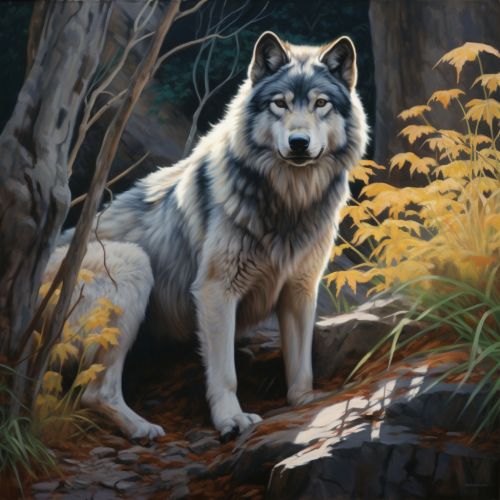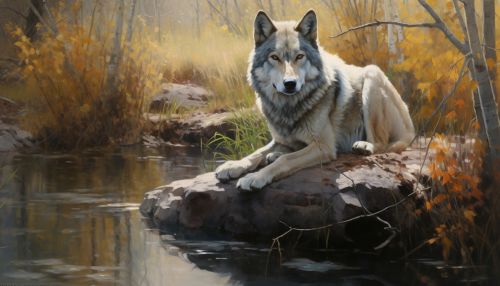Gray Wolf
Taxonomy and Evolution
The gray wolf (Canis lupus), also known as the timber wolf or western wolf, is a canine native to the wilderness and remote areas of Eurasia and North America. It is the largest extant member of its family, with males averaging 40 kg (88 lb) and females 37 kg (82 lb). The gray wolf is one of the world's most well researched animals, with probably more books written about it than any other wildlife species.


The gray wolf is classified as a member of the genus Canis (Latin for "dog") in the family Canidae. It is a social animal, travelling in nuclear families consisting of a mated pair, accompanied by the pair's adult offspring. The gray wolf is typically an apex predator throughout its range, with only humans and tigers posing a serious threat to it.
The gray wolf's lineage diverged from that of the domestic dog, Canis lupus familiaris, some 40,000 years ago. The domestic dog is now considered a distinct species, with the gray wolf its nearest wild relative. This divergence is thought to have occurred after humans began selectively breeding wolves for traits that made them better companions, such as smaller size and more docile behavior.
Description
The gray wolf is a large canine, with a dense coat of fur that varies in color from pure white to solid black. The fur serves to insulate the wolf in cold temperatures, and is shed in the warmer months. The wolf's eyes are typically yellow, although variations in eye color do occur.
The gray wolf's physical characteristics are highly adaptable, varying according to its environment. Wolves living in cold climates tend to be larger and heavier, with thicker fur, while those living in deserts are smaller, with lighter coats.
Behavior
Gray wolves are social animals, living and hunting in packs. A pack is usually a family group of five to eight animals, usually consisting of a pair of breeding adults and their offspring of various ages. The breeding pair is usually monogamous, and the pair's offspring assist in caring for younger members of the pack.
Wolves communicate with each other more by harmony and integration than by aggression and submission. A wolf pack is truly an egalitarian society, in which rank plays no role. The pack's social structure allows it to function as a unit while hunting, sharing food, and defending their territory.
Diet
The gray wolf is a carnivorous mammal, and its diet primarily consists of large ungulates, or hoofed mammals. These include elk, deer, moose, and caribou. Wolves are also known to eat smaller mammals, birds, fish, lizards, snakes, and fruit.
Wolves have been observed to eat a considerable amount of plant material. Although they are primarily meat-eaters, wolves are actually opportunistic omnivores and will eat whatever is available, including carrion and garbage.
Distribution and Habitat
Gray wolves were once the world's most widely distributed mammal, living throughout the northern hemisphere north of 15°N latitude in North America and 12°N in India. However, with the expansion of human populations, the species has been exterminated from many areas.
Today, the gray wolf inhabits a smaller portion of its former range. This includes parts of North America, Europe, Asia, and the Middle East. Wolves prefer to live in forests, tundra, taigas, grasslands, and deserts.
Conservation Status
The gray wolf is listed as a species of least concern by the International Union for Conservation of Nature (IUCN). However, it is considered endangered or threatened in some of its range, particularly in the United States.
Conservation efforts for the gray wolf include legal protection, habitat preservation, and reintroduction programs. Despite these efforts, illegal hunting, habitat loss, and conflicts with humans pose ongoing threats to the species.
